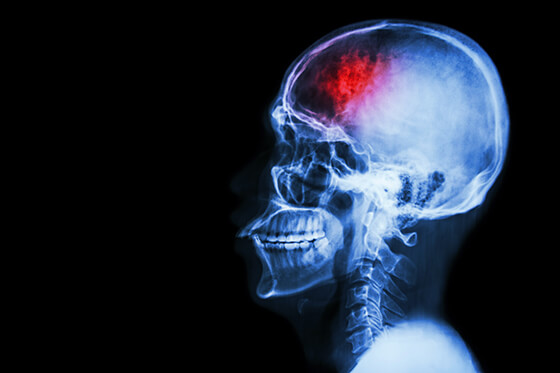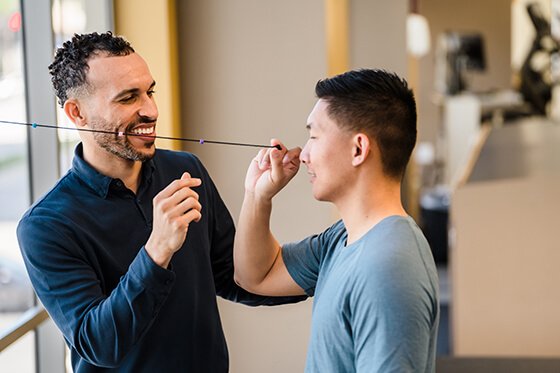Navigating the impact - concussions in fall sports
When a ‘bump on the head’ requires comprehensive care
Originally posted on 2/9/2017; updated 8/18/2023 to include new data and information.
As the start of another school year gets closer and the air turns crisper, fall sports enthusiasts are gearing up for another exciting season of football, soccer and other physically demanding activities.
While high school sports provide countless opportunities for teamwork, skill development and competition, they also come with one particular downside: the risk of concussions.
Yikes.
Concussions can also happen outside the world of sports. Car accidents, slipping on ice, an elbow to the head or luggage falling out of the overhead bin are just a few out of a thousand other ways to get a concussion.
It’s only somewhat avoidable, really.
They can happen anytime and anywhere.
Whether it’s a less intense trauma or a severe trauma, the fact is any impact to the head, neck or body has the potential to cause a concussion.
The nature of concussions
It’s important to know what a concussion is and how it can impact your life if you’re suffering from one.
They can be quite the headache, literally.
Concussions are a type of brain injury resulting from a forceful blow to the head or body that transmits a force to the brain that leads to a temporary change in the way it functions.
This sudden movement can cause microscopic stretching and sheering forces to the brain.
What makes a concussion even more complicated is its invisible nature.
Unlike a cut or a broken bone where you can see physical trauma, a concussion can often go unseen until mild to severe symptoms begin.
Even if it just seems like a “bump on the head,” symptoms can vary depending on the impact to the head or neck area.
So, concussions are pretty serious and shouldn’t be taken lightly.
This is your brain we’re talking about, after all. This injury needs a lot of attention and care because your brain performs all of your daily functions.
Signs and symptoms
Recognizing the common concussion symptoms is vital for prompt treatment and safety. Athletes, coaches, parents, friends, family or other loved ones should be aware of indicators such as:
- Confusion
- Headaches
- Dizziness
- Difficulty thinking
- Nausea
- Blurred or double vision
- Sensitivity to light or sound
- Changes in sleep patterns
- Increased anxiety and irritability
- Ringing in the ears
Other severe signs can include:
- Amnesia surrounding the traumatic event
- Dizziness, or “seeing stars”
- Slurred speech
- Temporary loss of consciousness
- Delayed response to questions
Symptoms can begin right away, while others may not appear for hours or days after the injury.
Any suspected concussion should be taken seriously. Athletes should be removed from play and evaluated by a medical professional, even if they don’t display symptoms right away.
The same goes for anyone who took a blow to the head or the neck. Even if no symptoms are present, you should be seen by a medical professional to determine the severity of the trauma and if further treatment is needed.
Mindfulness
Imagine this.
You open the door of your car and step out, but you drop something, like your car keys.
You bend over to pick them up and then stand back up.
BAM!
You crank your head on the hard car door. You might have just given yourself a concussion.
You see? Concussions are usually unavoidable.
You might scold yourself after the fact and say, “How could I have let this happen to me?”, but sometimes they just happen.
However, bringing awareness and education to this subject can help people be safer and recognize when they’re in a possible situation of getting a concussion.
For athletes, wearing protective equipment can lend a false sense in thinking it can prevent a concussion.
Football, soccer, lacrosse and field hockey players should be wearing helmets, mouth guards and other appropriate head gear.
Not being safe in your sport can lead to skull and jaw fractures, or even cerebral bleeding. However, the amount of force to the head does not change the likelihood of a concussion.
Returning to sports and life
One of the most critical aspects of managing concussions in the athletic world is the return-to-play process.
In the past, the primary treatment for a concussion was total rest. You’d lie in bed in a dark room, avoiding light exposure from things like the television or a smart device. Also referred to as “cocooning,” this was a one-stop-shop treatment approach for anyone and everyone who suffered a concussion.
But concussion symptoms and recovery time are unique for every person.
More recent findings show that after an initial 24-48 hours of rest, a combination of carefully and individually prescribed physical and mental activity is better than total rest. That doesn’t mean, though, that you should go full force into your previous activities.
Depending on your symptoms, some health care providers and physical therapists may recommend easing back into activity and some may recommend a longer treatment plan.
Also, sub-symptom exertion training is recommended to start 2-10 days after injury.
This training is designed specifically based on a specialty validated concussion exertion exam.
In basic terms, it’s a way to set a safe exercise program to help gradually return you to pre-concussion activity levels.
Once you get the “green light” from your health care provider to return to a full contact practice, that doesn’t mean you stop monitoring your symptoms. It’s crucial for an athlete’s parents and coach to watch for concussion symptoms each day after the athlete returns to make sure no further damage is done to the brain.
Returning to normal, everyday life
So, you’re ready to get back into the swing of things.
You feel good, but you still have some small, lingering symptoms after resting and taking it easy. You feel as if you don’t need any extra care or don’t want to take your home treatment a step further.
Does this mean you’re good to return to normal?
Not really.
Despite how or when someone sustained a concussion, the current recommendation to help is an active treatment and rehabilitation program.
Through some of our treatments, we can help with:
- Visual exercises, which helps increase visual clarity due to the eyes working inefficiently. This may involve doing eye exercises or complicated tasks of watching a busy scene with many moving items.
- Vestibular rehabilitation, which is used when the inner ears are involved. When you get a concussion, your equilibrium could be thrown off, so vestibular treatment helps eliminate dizziness and issues with balance.
- Neck treatments can address any neck pain or the many symptoms that can impact the neck after a concussion. Sometimes after a blow to the neck, the nerves in the neck stop communicating well with the brain, which can lead to fogginess, unbalance, headaches, etc.
One of the most important parts of getting back to normal is getting a thorough exam to determine the actual cause of your persistent symptoms.
Our concussion rehabilitation clinicians will do an assessment to develop a care plan unique to each person and case to get you back into everyday life.
Takeaways
Concussions are serious and can lead to persistent symptoms if not treated and examined properly by a health care provider.
But hey, there was just a ton of information thrown at you, so let’s break it down.
Here are some of the highlights of what you should do if you have or think you might have a concussion:
- Be vigilant about any post-injury symptoms. Early recognition of concussion can lead to faster recovery, even if it just seems like a small headache.
- Playing through a concussion increases the likelihood of having persistent symptoms.
- Knowing what to look for with symptoms and behaviors can help protect against a delayed recovery.
- If you think you or someone you know may have a concussion, speak out and remove yourself from the activity. Then, take it easy with relative rest for 24-48 hours. After this time, ease into gradual return to symptom-modulated activity and talk to your health care provider about physical therapy.
- The newly released international Concussion Consensus Statement recommends starting a specialized physical therapy program if you have dizziness, headache or neck pain 10 days after injury.
If you or someone you know have any lingering symptoms, we can help.
You can quickly find a center near you or request an appointment to work with one of our experts.




